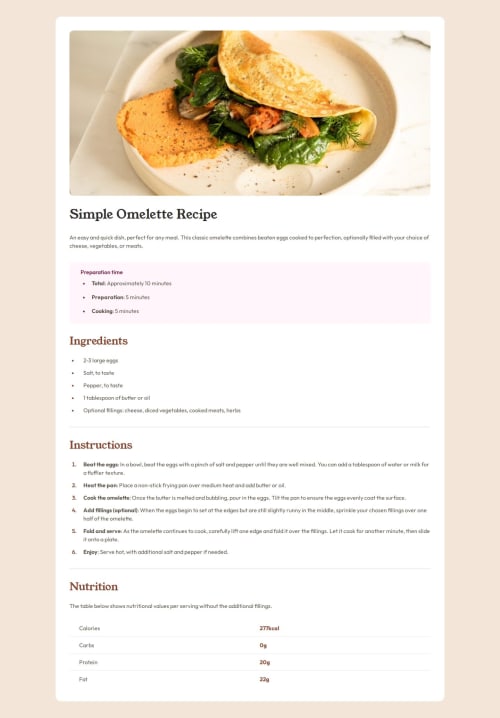Submitted about 1 year agoA solution to the Recipe page challenge
Recipe page with tailwind-css
tailwind-css
@ddosia

Solution retrospective
What specific areas of your project would you like help with?
I really dislike how I did the Nutrition part. Ideally it's simple 2 column grid with lines in between, but it was difficult to achieve it. I though it has to be ul (since this is a list), but it doesn't play well with grid. Also it was difficult to align items to beginning of cells and add borders.
Code
Loading...
Please log in to post a comment
Log in with GitHubCommunity feedback
No feedback yet. Be the first to give feedback on Daniil Churikov's solution.
Join our Discord community
Join thousands of Frontend Mentor community members taking the challenges, sharing resources, helping each other, and chatting about all things front-end!
Join our Discord